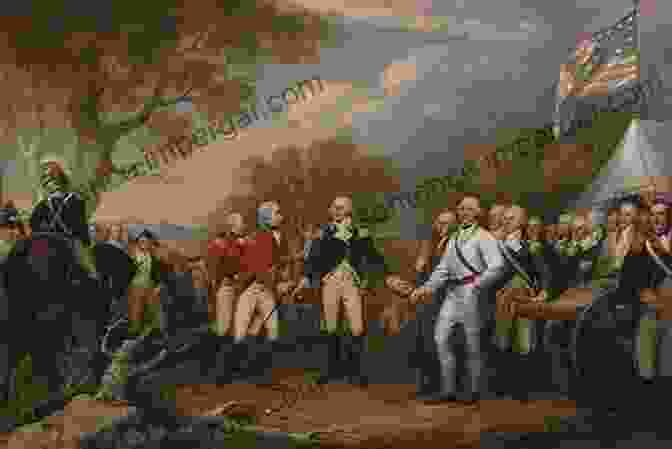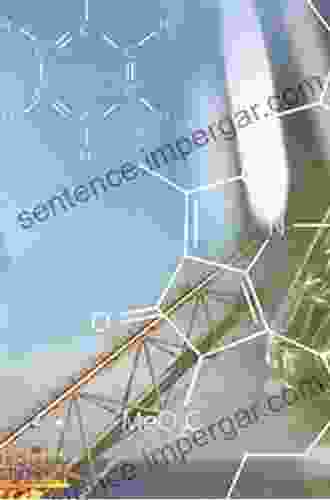Saratoga and the American Revolution: Pivotal Moments in American History


4.7 out of 5
| Language | : | English |
| File size | : | 51143 KB |
| Text-to-Speech | : | Enabled |
| Screen Reader | : | Supported |
| Enhanced typesetting | : | Enabled |
| Word Wise | : | Enabled |
| Print length | : | 539 pages |
| Lending | : | Enabled |
The Battle of Saratoga was a turning point in the American Revolution. Fought between September 19 and October 7, 1777, the battle resulted in a decisive American victory and convinced France to enter the war on the side of the Americans. The battle is considered one of the most important in American history, and its outcome had a profound impact on the course of the Revolution.
The book Saratoga and the American Revolution: Pivotal Moments in American History tells the story of the battle and its aftermath. The book is written by historian and author Nathaniel Philbrick, who has written extensively about the American Revolution. In the book, Philbrick provides a detailed account of the battle, from the planning stages to the final surrender of the British army. He also explores the significance of the battle in the founding of the United States.
Saratoga and the American Revolution is a well-written and informative book that provides a comprehensive account of one of the most important battles in American history. The book is a valuable resource for anyone interested in the American Revolution and its impact on the founding of the United States.
Table of Contents
- The Road to Saratoga
- The Battle of Saratoga
- The Aftermath of Saratoga
- The Legacy of Saratoga
The American Revolution was a long and bloody conflict that lasted for eight years. The war began in 1775 with the Battle of Lexington and Concord, and ended in 1783 with the signing of the Treaty of Paris. During the war, the American colonists fought for their independence from Great Britain. The war was fought on land and sea, and it involved both regular armies and guerrilla fighters.
The Battle of Saratoga was one of the most important battles of the American Revolution. The battle was fought in upstate New York in the fall of 1777. The American army, led by General Horatio Gates, defeated the British army, led by General John Burgoyne. The American victory at Saratoga convinced France to enter the war on the side of the Americans. The French alliance was a major turning point in the war, and it helped the Americans to eventually win their independence.
The Road to Saratoga
The Battle of Saratoga was the culmination of a series of events that began in the spring of 1777. In May of that year, the British army launched a campaign to capture the Hudson River Valley. The British hoped to cut off New England from the rest of the colonies and to gain control of the important port of New York City.
The British army, led by General John Burgoyne, marched down Lake Champlain and captured the American fort at Ticonderoga. Burgoyne then continued south, but his progress was slowed by American forces under the command of General Horatio Gates. Gates's army harassed the British as they marched through the wilderness, and they eventually forced Burgoyne to retreat.
Burgoyne's retreat led him to Saratoga, New York. Gates's army followed, and the two armies clashed in a series of battles in September and October of 1777. The Americans eventually surrounded the British army, and Burgoyne was forced to surrender on October 7, 1777.
The Battle of Saratoga
The Battle of Saratoga was a complex and bloody affair. The fighting took place over a period of several weeks, and it involved both regular armies and guerrilla fighters. The Americans were outnumbered, but they were better adapted to the terrain and they had the support of the local population.
The battle began on September 19, 1777, with a British attack on the American позицииs at Freeman's Farm. The Americans repulsed the attack, and they counterattacked the next day. The fighting was fierce, and both sides suffered heavy losses.
The fighting continued for several more weeks, and the Americans gradually gained the upper hand. On October 7, 1777, Burgoyne's army was surrounded and forced to surrender. The American victory at Saratoga was a major turning point in the war, and it convinced France to enter the war on the side of the Americans.
The Aftermath of Saratoga
The American victory at Saratoga had a profound impact on the course of the war. The victory convinced France to enter the war on the side of the Americans, and the French alliance was a major factor in the eventual American victory. The victory also boosted the morale of the American people, and it helped to convince them that they could win the war.
The British were stunned by the defeat at Saratoga. The loss of an entire army was a major blow, and it forced the British to rethink their strategy. The British eventually abandoned their plan to capture the Hudson River Valley, and they focused instead on defending their positions in New York City and other coastal areas.
The Legacy of Saratoga
The Battle of Saratoga is considered one of the most important battles in American history. The battle was a turning point in the war, and it helped to secure American independence. The battle is also remembered for the courage and determination of the American soldiers, who fought against overwhelming odds and won a decisive victory.
The Battle of Saratoga is commemorated today with a national park and a museum. The park is located on the site of the battle, and it includes a variety of exhibits and programs that tell the story of the battle. The museum is located in the nearby town of Schuylerville, New York. It houses a collection of artifacts from the battle, and it offers a variety of educational programs.
The Battle of Saratoga is a reminder of the courage and determination of the American people. The battle was a turning point in the war, and it helped to secure American independence.
4.7 out of 5
| Language | : | English |
| File size | : | 51143 KB |
| Text-to-Speech | : | Enabled |
| Screen Reader | : | Supported |
| Enhanced typesetting | : | Enabled |
| Word Wise | : | Enabled |
| Print length | : | 539 pages |
| Lending | : | Enabled |
Do you want to contribute by writing guest posts on this blog?
Please contact us and send us a resume of previous articles that you have written.
 Book
Book Novel
Novel Page
Page Chapter
Chapter Text
Text Story
Story Genre
Genre Reader
Reader Library
Library Paperback
Paperback E-book
E-book Magazine
Magazine Newspaper
Newspaper Paragraph
Paragraph Sentence
Sentence Bookmark
Bookmark Shelf
Shelf Glossary
Glossary Bibliography
Bibliography Foreword
Foreword Preface
Preface Synopsis
Synopsis Annotation
Annotation Footnote
Footnote Manuscript
Manuscript Scroll
Scroll Codex
Codex Tome
Tome Bestseller
Bestseller Classics
Classics Library card
Library card Narrative
Narrative Biography
Biography Autobiography
Autobiography Memoir
Memoir Reference
Reference Encyclopedia
Encyclopedia James S Valliant
James S Valliant James Eyers
James Eyers Jay Feld
Jay Feld Jay Sharma
Jay Sharma James F O Gorman
James F O Gorman Janie Mcgee
Janie Mcgee Jana Freiband
Jana Freiband Jean Louis Vincent
Jean Louis Vincent Jane Mattes
Jane Mattes Jan Yager
Jan Yager James C Carpenter
James C Carpenter James Kakalios
James Kakalios James T Lamiell
James T Lamiell Javier Santaolalla
Javier Santaolalla James A Mckenna
James A Mckenna Jason Cusick
Jason Cusick Jayaprakash Vellila
Jayaprakash Vellila Jason Chambers
Jason Chambers James W Loewen
James W Loewen Jason Reza Jorjani
Jason Reza Jorjani
Light bulbAdvertise smarter! Our strategic ad space ensures maximum exposure. Reserve your spot today!

 Frank ButlerEmbark on a Culinary Odyssey: Mediterranean Cuisines - Tantalizing Recipes...
Frank ButlerEmbark on a Culinary Odyssey: Mediterranean Cuisines - Tantalizing Recipes... Ike BellFollow ·15.2k
Ike BellFollow ·15.2k Arthur Conan DoyleFollow ·8.6k
Arthur Conan DoyleFollow ·8.6k Jason HayesFollow ·15.5k
Jason HayesFollow ·15.5k Douglas PowellFollow ·16.3k
Douglas PowellFollow ·16.3k Emmett MitchellFollow ·15.6k
Emmett MitchellFollow ·15.6k Osamu DazaiFollow ·7.8k
Osamu DazaiFollow ·7.8k Rex HayesFollow ·5.6k
Rex HayesFollow ·5.6k Walt WhitmanFollow ·8.2k
Walt WhitmanFollow ·8.2k

 Jacob Foster
Jacob FosterPrinciples and Persons: The Legacy of Derek Parfit
Derek Parfit's 1984 book,...

 Leo Mitchell
Leo MitchellPartners For Life: Raise Support For Your Missionary Work...
Are you a missionary or ministry leader...

 Blake Kennedy
Blake KennedyOn Desperate Ground: A Gripping Account of World War II's...
Hampton Sides' "On...

 Duane Kelly
Duane KellyCriminal Minds Sociopaths Serial Killers And Other...
In the realm of criminology,...

 Craig Blair
Craig BlairHome Repair: The Ultimate Guide to Fix, Maintain, and...
Welcome to the...

 Elmer Powell
Elmer PowellThe Organic Grower Guide to Mycorrhizae Science for...
Unlock the Secrets of Soil...
4.7 out of 5
| Language | : | English |
| File size | : | 51143 KB |
| Text-to-Speech | : | Enabled |
| Screen Reader | : | Supported |
| Enhanced typesetting | : | Enabled |
| Word Wise | : | Enabled |
| Print length | : | 539 pages |
| Lending | : | Enabled |










